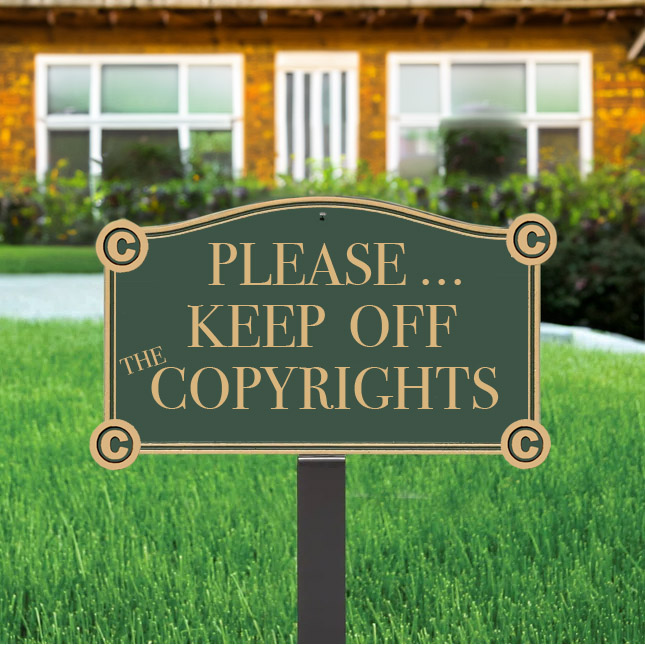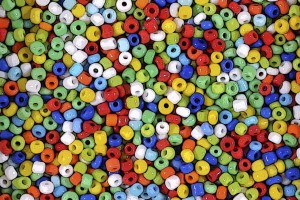 Here are five ways we can help you save money and maintain your cash flow. Continue reading
Here are five ways we can help you save money and maintain your cash flow. Continue reading
Does a Copyright Notice Prevent Website Copying?
QUESTION: Does putting “Copyright 2023” at the bottom of pages on my crafts website protect it from site visitors who download an image or text?
ANSWER: Placing a copyright notice on your website is like sticking a “Keep off the grass” sign on your front lawn. People who respect your property rights will stay off, and those who don’t respect the rules … you’ll just have to chase them away for trespassing. The copyright notice doesn’t add any new weapons to your copyright arsenal (although it used to be very important). And unless you’re willing to follow up a theft with a threatening letter (or better yet, have your attorney do it), it’s unlikely your copyright notice will have much effect on a bad actor bent on copying.
Rephrase the question. Can we suggest you rephrase your question to “What can I do about visitors who download images and content from my website without my permission?” There are technical methods of preventing copying of your text, but these involve website coding, and some techies consider them pointless.
The legal route. Tracking infringers, threatening them with legal action, and dragging them into court for financial punishment has proven to be the most effective way to deal with website theft. Because the government does not enforce copyright, you must hunt down infringers and seek justice, so protecting your website can be expensive. Also, remember that winning your case doesn’t guarantee a return on attorney fees.
Fortify your defenses. If you foresee the possibility that you’ll nab someone copying your website, the following steps will increase your chances of success and remuneration for your troubles.
- Ensure you own or have permission to use your website content.
- Include copyright notice on each of your web pages (It may help prove that the infringer was aware you claimed copyright).
- Include a method for contacting you if someone wants to license content.
- Gather evidence of copying. Prepare side-by-side tables showing your site and the copied site.
- Register your website. If you have a registration in place three months before an infringement occurs, a judge has more freedom in awarding statutory damages – a range of punishments instead of just compensating you for out-of-pocket damages — and attorney fees. You’ll find help on website registration at the Copyright Office.
- If you can afford it, have an attorney write a cease and desist letter.
- If you can afford it, have an attorney file a copyright suit, or if you are a go-getter with a DIY mindset, consider filing a case in the Copyright Small Claims court.
- Review the facts before you make threats. Some who copy may have fair use defenses.
- Pick your fights carefully. Go after those (1) inflicting the most damage competitively or (2) high-profile copying that you can’t ignore.
Converting Chinaware to Needlepoint
Question: I am adapting needlework-like designs used in pottery/chinaware by creating patterns for needleworkers. Much of the chinaware was produced in the 1800’s but some as late as the 1960s. I have sought and received permission where possible, but not in all cases because the companies no longer exist. What are the laws covering those designs for which I cannot get permission?
We think you will be fine using the chinaware designs for needlepoint patterns based on the following factors:
Continue readingEtsy Took Down My Louise Brooks Artwork

Question: A company in Florida filed a trademark on “Louise Brooks” and has used that to remove all Louise Brooks items off of Etsy in order for its company to sell its own Louise Brooks products. My understanding is that all publicity photos taken back in the 1920s and 1930s were never copyrighted, therefore, in the public domain, especially if the photographer is unidentified. Is this legal for a company to suddenly do this? Louise Brooks has never had an active estate before … to the best of my knowledge.
It’s a tribute to Mary Louise “Lulu” Brooks (who would have been 114 this year), that merchandise with her image is still popular. It’s probably attributable to her jazz icon persona, the availability of public domain imagery, her always-stylish bob haircut, and the fact that her estate has not exerted control over the sale of Brooks goods (the estate is not behind the series of takedowns you mentioned). Instead, vendors had operated laissez-faire, selling a wide range of goods until December 2019, when a Florida company acquired the exclusive right to use the Louise Brooks trademark on over 40 types of merchandise (listed below).
Free Crafts Contracts
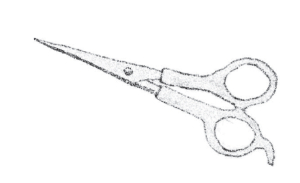 By downloading or copying these agreements, you agree not to distribute any agreement as a blank legal form or to create a download link directly to the agreement.
By downloading or copying these agreements, you agree not to distribute any agreement as a blank legal form or to create a download link directly to the agreement.
- Wholesale Invoice – use this invoice when making wholesale transactions
- Consignment Agreement – use this contract when consigning crafts work to a store or gallery
- Commission Agreement – use this agreement if a customer has requested a custom order
- Work Made for Hire Agreement – use this agreement if you want to acquire copyright ownership of a work created by a contractor
- Merchandise License Agreement – use this merchandise agreement if you are permitting someone else to make and sell your crafts or your designs
- Sales Representative Agreement – use this agreement when hiring a sales representative
- Model Releases – use these releases when photographing models for advertising and other promotional purposes
- Copyright Assignments – use these agreements when you need to transfer copyright ownership from one party to another
- Nondisclosure Agreement – use this agreement when you want to protect trade secrets
How Long to Get Design Patent?
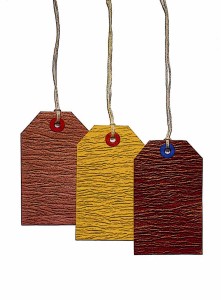 Question: I want to protect my designed pendants in the USA. What should I do? And what cost per pendant design? And how long will it take?
Question: I want to protect my designed pendants in the USA. What should I do? And what cost per pendant design? And how long will it take?
A design patent may take one year or more to issue (although half of the applications issue in less than a year). An applicant can speed things along — that is, obtain a design patent within two to six months — by filing a Request for Expedited Examination of a Design Patent and paying a hefty fee. Here’s an article about the expedited system. You can learn more about design patent strategy in this article and we explain the steps for preparing an application in this section of our site. You can learn current fees at the USPTO website.
Can Beading Magazine Claim Copyright in Geometric Pattern?
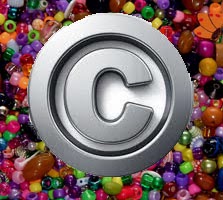 Question: A beading magazine has lots of instructions for making beaded jewelry designs that are purely geometric. The magazine tells readers that they can only use these designs for gifts or personal use (but not to sell). Can the magazine stop me from selling jewelry based on these designs?
Question: A beading magazine has lots of instructions for making beaded jewelry designs that are purely geometric. The magazine tells readers that they can only use these designs for gifts or personal use (but not to sell). Can the magazine stop me from selling jewelry based on these designs?
Answer: We think you can probably sell the designs without incident but our response depends on the uniqueness and novelty of the patterns. Continue reading
What Rights Does a Crafts Buyer Acquire?
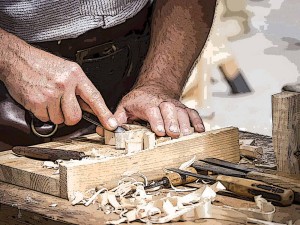 Question: I sell original wood sculptures. What rights does a buyer get?
Question: I sell original wood sculptures. What rights does a buyer get?
Answer: Assuming it’s protected under copyright law, a customer acquires the limited right to display the wood carving at home (though not in a museum) and to lend it, rent it, and re-sell it (and in some cases, to destroy it—although certain fine art crafts works such as sculptures and limited edition prints and photographs are exempt from this rule. The customer cannot make copies or otherwise reproduce it. You control all copyright in the work .
Do I Need a Lawyer to License Crafts
 Question: I’m a crafts artist and I create fantasy animals and sell them as sculptures and prints. A company wants to license two designs for fabric for use in children’s products. They’re asking me to sign a license for three years. According to the contract, I can still sell sculptures and paper prints. I just can’t do clothing. bed sheets and similar fabric items. I think I understand the agreement. I’d hate to blow most of my advance on a lawyer if I don’t need one. But people are telling me I should see an attorney. What do you think? Continue reading
Question: I’m a crafts artist and I create fantasy animals and sell them as sculptures and prints. A company wants to license two designs for fabric for use in children’s products. They’re asking me to sign a license for three years. According to the contract, I can still sell sculptures and paper prints. I just can’t do clothing. bed sheets and similar fabric items. I think I understand the agreement. I’d hate to blow most of my advance on a lawyer if I don’t need one. But people are telling me I should see an attorney. What do you think? Continue reading
Etsy Pulled My Upcycle
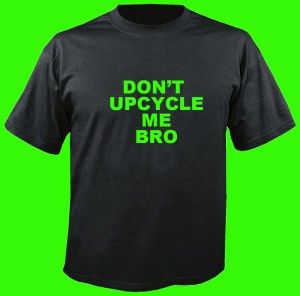 Question: I just had some items pulled from my Etsy shop at the request of a band’s attorney citing intellectual property rights violation. From what I grasp the offense is taken mostly from the public displays of the bands name and logo in the picture listings as well the attorney’s assumption I am financially gaining off the logo and not my labor/seamstress skills.
Question: I just had some items pulled from my Etsy shop at the request of a band’s attorney citing intellectual property rights violation. From what I grasp the offense is taken mostly from the public displays of the bands name and logo in the picture listings as well the attorney’s assumption I am financially gaining off the logo and not my labor/seamstress skills.
Answer: We’re sorry to hear that your Etsy items were pulled.
As for your copyright question, not much has changed since we last discussed this issue. Repurposing legitimately-acquired t-shirts should not infringe copyright. However, the trademark rules are not as clear. Continue reading

